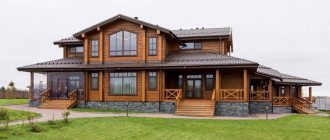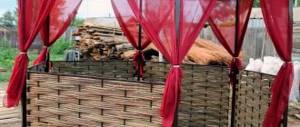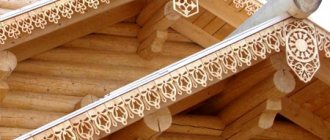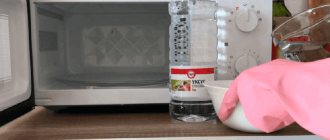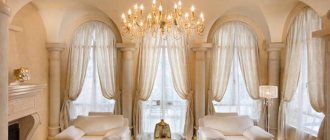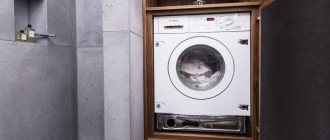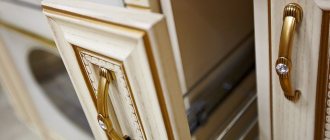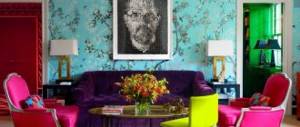Building a gazebo is one thing, but making it beautiful and attractive is a completely different matter. The interior decoration of the gazebo requires attention from its owner. Moreover, it is necessary to maintain balance in the pursuit of beauty and practicality. Not all beautiful and attractive finishing materials are practical. In this article, we invite you to consider several technologies of how and with what you can finish the gazebo both inside and outside.
Common cladding materials
The aesthetics of the entire building directly depends on the chosen material for the cladding. For finishing you can use a number of technologies, including:
- Tree. This material is used in many different ways today. For example, installation of lining, imitation timber, edged boards, carved products, slats and much more. Wood is suitable for all cladding, except for grills and barbecues.
- Siding. Finishing gazebos with siding is mainly used for external cladding of walls and parapets.
- Polycarbonate. Can be used for finishing walls and roofs. Can be used in combination with metal and wood.
- Forging. It is used as a decorative element. For example, in a window opening you can install forging instead of a window or wooden grill.
- Facing brick. When the walls of the gazebo are made of brick, the cladding can be made with a special material for this purpose. Brick is also perfect for finishing fireplaces, barbecues, barbecues, etc., if the building has them.
- Tile. This is a universal material, as it can be used for both interior and exterior decoration of the gazebo.
These are the most common technologies that can be used for finishing a gazebo. Now let’s take a closer look at their features, namely their advantages and disadvantages.
Polycarbonate
This material is suitable for gazebos of completely different shapes. The advantage of polycarbonate is that it can easily and quickly form the roof and walls of the gazebo. Polycarbonate is available in both transparent and different colors. Everyone chooses according to their own taste. If you prefer shade, then choose opaque polycarbonate sheets.
Reiki
Wooden slats are used as cladding for doorways and interior walls of the gazebo. Wood trim always looks beautiful and impressive. The modern market has gone further and today you can buy plastic slats. They can imitate the appearance of wood and other finishing materials. Plastic slats can also be mounted externally.
Profiled sheets
This is a cheap and accessible material. Thanks to the special coating, the corrugated sheeting is quite durable. Its only disadvantage is that under the rays of the scorching sun it heats up and it will be very hot inside the gazebo. Plus, when it rains, there will be a lot of rain and hail rumbling through it. With this in mind, think and weigh the pros and cons.
Lining
Lining is an environmentally friendly, beautiful and presentable material, which is ideal for both external and external decoration of the gazebo. Today you can buy lining made of both wood and plastic. They are easy to install. The use of lining also allows for high-quality finishing of the ceiling. A block house can also be included in this category. This finish imitates timber, which will give others the impression that the gazebo is made of timber.
Advice! If the lining is chosen as an exterior finish, then install it in a vertical position. This will eliminate the possibility of moisture accumulation in the mounting grooves.
Vinyl siding
This is one of the modern finishing materials that is used for closed gazebos. You can also use it for summer gazebos, for example, for covering a parapet. Siding is practical. It is not afraid of moisture, ultraviolet rays and does not provoke the formation of corrosion, mold, fungi and the like. It also has disadvantages. In severe frosts, siding becomes brittle and prone to breakage.
Edged board
This material is the most accessible today. At the same time, the finishing he performs will be reliable and practical. The important thing here is to decide whether to use a narrow or wide board. It's all a matter of taste. It is also worth mentioning the fact that before installation, the edged board should be processed, bark removed, etc. This material can also be used to line the ceiling. The only drawback is that the board is susceptible to rotting and destruction.
In a private house
Let's start with a private house. Despite the seemingly pre-revolutionary technology, floors with wooden beams can be found even in modern cottages, and in wooden construction this is, in general, almost the only acceptable option. It is all the more interesting to see what can be used for cladding.
Drywall
Despite everything, gypsum board still holds a leading position in the manufacture of ceilings in civil construction. Well, the material is inexpensive, good quality, and in terms of design it doesn’t at all hamper interior designers. Take it and create for your own pleasure. The main thing is not to forget that the tree is alive. Humidity or temperature changes, and the beam may move somewhere, and with it the geometry of the vault will change.
Therefore, when hanging the frame from a tree, free your ceiling from being rigidly tied to the walls. By constructing it, for example, using the “floating ceiling” technology or organizing an expansion joint.
And this is what plasterboard ceilings can look like, where wooden beams are used as the base.
Lining
Wooden paneling also looks very nice in the house. Yes, this is not drywall. You cannot carve such a variety of shapes and ceiling figures from wooden slats, but the living material has its own charms.
- Firstly, in an unheated dacha, a tree will feel no worse than in apartment conditions.
- Secondly, there is no need to be afraid that something will break or fall apart somewhere. The interlocking joints of the lining were developed to prevent such defects.
- And thirdly, the atmosphere created by wood cannot be replaced by any artificial material. There is the warmth of Provence, the carelessness of rustic, and even the elegance of the Scandinavian style. In short, you can create a mood to suit every taste.
Stretch ceiling
But this type of vault does not care at all about the rough foundation. Just don't let the dust fall off it, otherwise the main load will always be on the walls. Although every rule has its exceptions. No matter how much you would like it, you cannot simply build a complex multi-level film vault using wooden beams. Whatever one may say, you will have to build a flat plane at least in the transition areas, otherwise it will not be possible to organize them.
Well, here are examples of similar interiors.
How to finish the floors in the gazebo
Now let's look at the materials that can be used to finish the floors inside the gazebo. Among other things, the following technologies are known:
- Backfill.
- Clay floor.
- Tree.
- Paving slabs.
- Porcelain tiles.
Let's also consider the features of these technologies.
Backfill
This method is ideal for finishing open gazebos, as can be seen in the photo in this section. Various materials can be used here, such as sand, crushed stone, fine gravel and even compacted soil. However, it is important to be prudent here. Weeds and grass will grow through such a covering. Therefore, before filling, be sure to remove a layer of fertile soil, usually about 200 mm, and also lay geotextiles, possibly in two layers.
Clay floor
An equally interesting option is with an adobe floor. To implement it you need straw, clay and water. A layer of crushed stone is poured onto the ground, and a layer of adobe mixture up to 70 mm is applied on top. The clay mixture should be thick. It is important to evenly distribute the clay over the entire surface of the floor inside the gazebo. Also note, it is necessary to organize a reliable shelter so that the rain does not wash away the clay. As you can see, although the option is budget, it is dubious.
Tree
Wooden flooring is often used when finishing a gazebo. To do this, it is necessary to install logs, as well as make flooring from a floorboard. This material can also be used for cladding walls and finishing the ceiling of the gazebo. Before using wood, all workpieces should be treated with an antiseptic against rot and mold.
Paving slabs
Paving slabs are a reliable finishing material for floors. It is durable and able to cope with the negative effects of moisture and other atmospheric phenomena. To prevent falls, it is better to choose paving slabs with a rough surface. Its installation is very simple.
Porcelain tiles
Porcelain tiles are also an original solution for floor finishing. Some people also use porcelain tiles to decorate the walls of a brick gazebo. For example, it can be used to treat the working surface of a barbecue, if there is one inside the gazebo. Porcelain tiles are resistant to mechanical stress and are also not susceptible to rotting. The cost of porcelain tiles is considerable, so not everyone will be able to purchase them. Moreover, you must first make a high-quality and smooth concrete floor. After installing the tiles on the floor, all seams should be treated with moisture-proof grout to eliminate the possibility of moisture penetrating into the screed.
Lining for finishing the gazebo
General information
The lining is a calibrated board with a tongue-and-groove joint on both sides, designed specifically for cladding rooms. Thanks to this connection, the boards fit tightly to each other.
Among the advantages of lining, the following points should be highlighted:
- Low cost of material;
- Easy installation;
- Good sound and heat insulation properties;
- Attractive appearance of natural boards;
- Lining is a natural material that creates a pleasant microclimate, which is important for indoor spaces;
- Lining can be used for both interior and exterior finishing of gazebos.
Pine paneling
Types of lining
Interior decoration can be made from various types of wood, however, the cheapest and at the same time fairly high-quality option is pine. Moreover, it has a very beautiful texture.
There are also more expensive types of lining from:
- Linden trees;
- Alders;
- Oak;
- Cedar;
- Larches;
- Aspens.
On the market, lining is presented in different shades, ranging from the lightest to the darkest. In addition, all kinds of tinting allow you to give the wood any color.
Gazebo trimmed with clapboard
Installation features
The lining can be mounted in several ways:
- Vertical;
- Horizontally;
- Diagonally.
Related article: How to grow tulips on the balcony
In addition, a combination of these variations is allowed; it looks very interesting. However, if the gazebo is small in size, then it is better to use a horizontal arrangement, as it expands the space. For a low gazebo, you can place the material vertically, which will visually increase its height.
Advice! Before finishing the gazebo, you need to decide whether electricity will be carried out in it. If so, then first you need to do all the wiring, install lamps and sockets, check their functionality, and only then start finishing.
